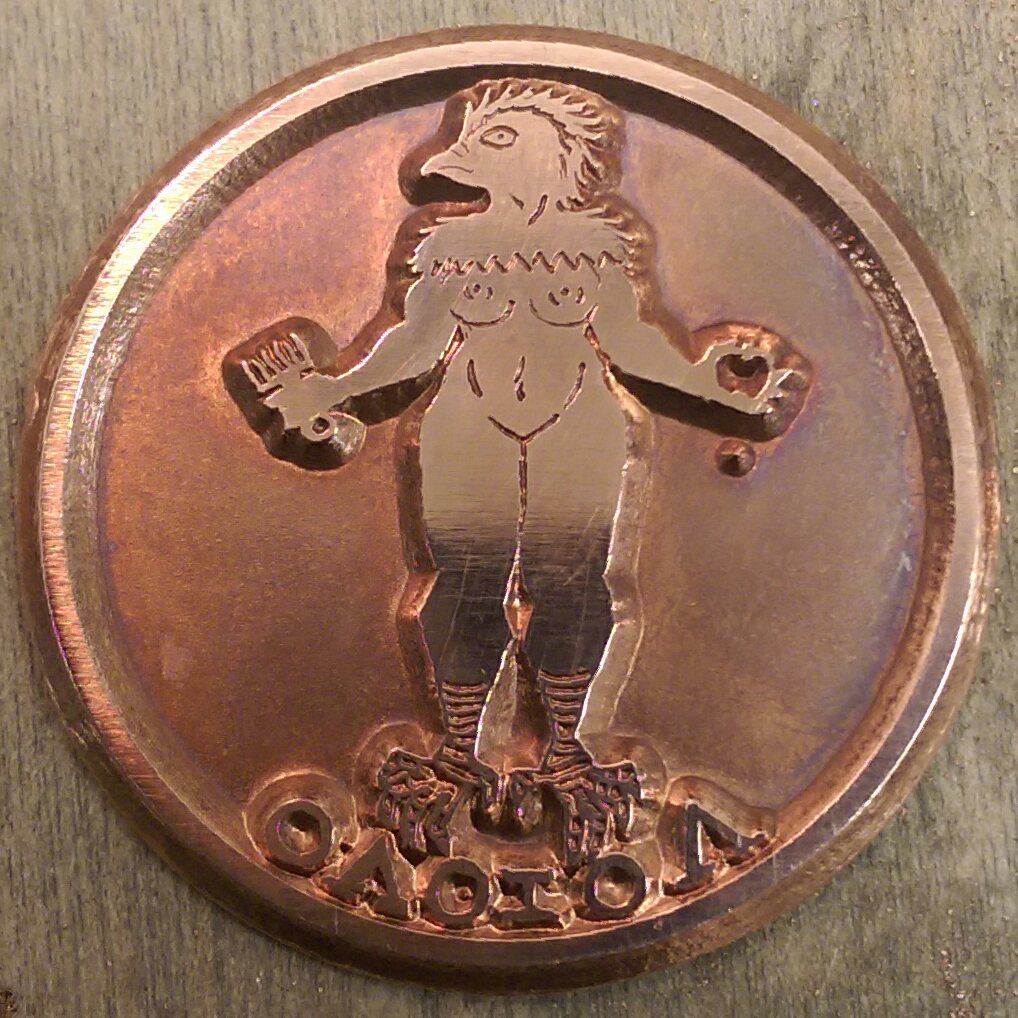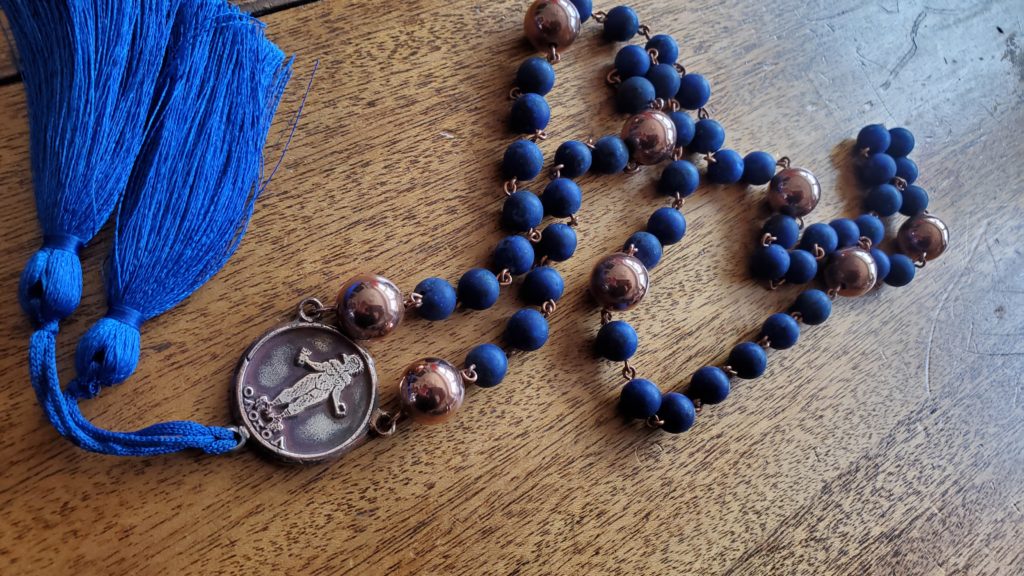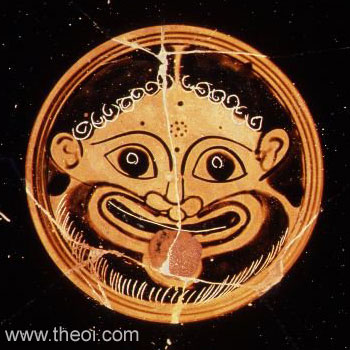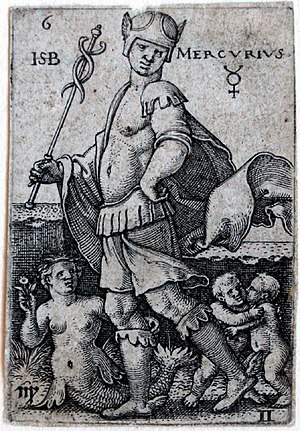“The image of Venus according to the opinion of Picatrix is the shape of a woman with a human body but with the head of a bird and the feet of an eagle, holding an apple in her right hand and a wooden comb similar to a tablet in her left, which has these figures written upon in [the Greek letters OLOIOL]. Whoever carries this image will be well received and esteemed by all.”
Picatrix Bk 2, Chapter 10, Paragraph 55, translated by Attrell and Porecca
I drew my first Image of Venus while I was in college, as I was beginning to catch my stride with what I was calling the Ceremonial Experiment (with no idea, then, the long-term effects it would have on my magical practice). I later remade the image as a photograph, with a hand-made mask and a human model. I returned to the Image of Venus, again, when I changed jewelry jobs after college and found myself in the rare position of having space and encouragement to learn and grow as a jeweler. If it was not literally the first piece that I prototyped through what would become my signature process (I think that it was), it was in the very first batch. And, thus, it was one of the handful of designs that launched the Sorcerer’s Workbench.
The Image of Venus was not the only Picatrix image I attempted at that time, but it was the only one I finished. It played to my strengths as an illustrator: a standing figure with animal features and simple iconography. When I went to take that first illustration – which, tragically, seems to have vanished into the void – it was relatively easy to take my line art and redraw it to fit the needs of the prototyping process I learned at the (then new) day job.


In a very real sense, the Image of Venus Picatrix talisman was the prototype for entire line of Piecatrix talismans. It was early experiments with the Image of Venus that taught me how much power could come from the image alone, without any enchantment, and how the inclusion of the Agrippan seals and characters amplified that raw power, and helped tune out any trouble from a mediocre election, or an unelected enchantment ritual. The talisman that I, myself, carry to this day has only the image, without the characters and seal, and was consecrated/enchanted post-facto after having been carried for some months. The spirit that now dwells in that talisman is one of my most trusted familiars.
It is, in large part, for the benefit of this talisman that have I practiced and perfected my shibuichi process. Shibuichi is a Japanese art metal alloy of copper and silver at a 3:1 ratio (the name literally translates as one in four) that can look like rose gold when highly polished, darkens to a lovely coppery rusty red over time, and takes a stunning matte black patina. It is also available in .925 sterling silver, yellow brass, or red bronze.
As with most of my talismans, I offer the Image of Venus as a coin, a pendant, or a “rosary” charm with three rings so that it can be easily strung on prayer beads. If you are particularly concerned about the talisman taking its “final form” during the election (something I have observed spirits require from some sorcerers but not others for reasons known only to the spirits, themselves), I recommend stringing the rosary or pendant variants on prayer beads, which you could complete during the electional window.

Each piece is hand-made to order in my home studio, with unique variations and defects as a result of the fabrication and casting process.
These talismans are NOT consecrated. That is your responsibility. Many customers have reported intense vibes from the power of the image, seal, and characters, but you still need to put in your part of the work, whatever that looks like in your tradition.
Astrological timing and consecration is available with a minimum of 30 days advance notice at an additional charge depending on the difficulty of the election you provide me with.
Custom variations – such as with stones, or alterations to the image – are available at my usual custom jewelry rates.
https://www.etsy.com/listing/817915354/picatrix-image-of-venus-two-sided



